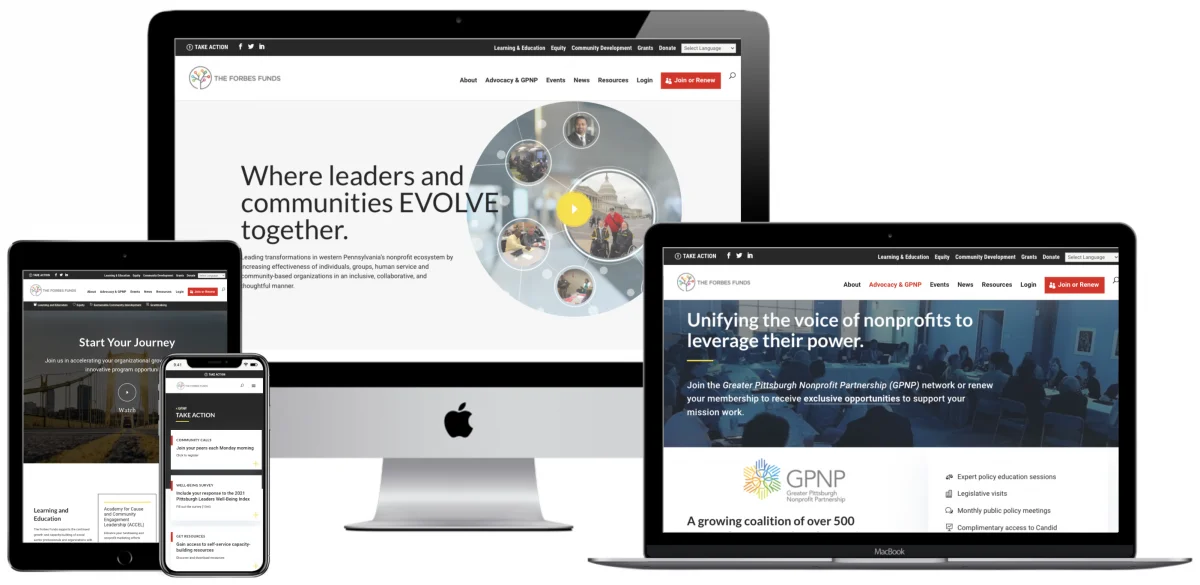“Content marketing” is the buzzword of the century. Those in the 1880s and 1890s when “content marketing” began may not have called it that, but in the early days of content The Furrow, a farmer’s magazine not only pushed John Deere products but it also provided valuable information to consumers. Ever heard of a Michelin star restaurant and wondered what tires have to do with food? You’re probably not alone. It all began in 1900 when the French tire company, Michelin, came up with an idea to publish The Michelin Guide, which was 400-pages of information to drivers about automotive maintenance, hotel, and travel advice. Despite the fact that only 2,200 cars were on the French roads at the time, Andre and Edouard Michelin distributed 35,000 free copies. The idea was that people were more likely to travel in their cars if they had access to the guidebook; they’d wear out their tires and the guide would create brand awareness. Who would they go to if they wanted new tires? Michelin, most likely! Of course, this is a canned early history of content. It then moved to publications like The Ladies Home Journal to product marketing on the radio to the ad executives of the 1950s. Modern companies did not invent content marketing; it has been around for well over a century (as you can see) but now everyone does it. You don’t get as big of a slice in the market as companies did in the early days. But in order to stay relevant in a world full of content, you need to have your content strategy and content tactics in place.
Most businesses hear the whole spiel of “you need to have the right content strategy” in place to achieve your business goals. But what if they really mean “content tactics”? What is the difference between content strategy and content tactics? Let’s weigh up content strategy vs. content tactics.
In a nutshell: what is content strategy and what are content tactics?
Content tactics: actions taken to support the content strategy–what social media platform to use, which channels you’ll use for distribution of that content, how you’ll measure content performance, and so forth.
Content strategy: planning, developing, and managing written media–the high-level vision that aligns with business needs and goals, guiding future content development with a specified plan.
Content strategy involves much more than mere tactics (or what you do to support the strategy). Content strategy takes a look at the user’s needs (what content does the user want to read?) and desires around that content and marries it with the business needs. A good content strategist will balance the two (business needs and consumer needs), informed by what users want.
Every piece of content should do something for the organization. There shouldn’t just be content for the sake of having content. All of your content should guide your potential consumer on their journey. Every piece should guide the user on what to think, what to feel, and what to do with that content. Does every piece of content allow the organization to reach its stated goals?
What types of content are there?
There are endless types of content you can create. Here are just a few of the most popular types of content.
- Blog posts/articles
- Videos
- Infographics
- Case studies
- eBooks
- White papers
- Checklists
- Interviews
- Q&As
- Step-by-step guides
- Statistics
- Social media posts
- GIFs and memes
We have created some content around some of these topics. If you want to find out more read our pieces below.
- Essential SEO and Content Marketing Tactics for Web Developers during a Redesign Process
- A Guide to Creating Engaging Video Content
- Why Blogging Matters & Best Practices
- Off-Page SEO Vs On-Page SEO
Keep in mind that you want to keep SEO tactics in mind when creating any type of content. The most popular type of content is blog content, often distributed through social media. Blogging often generates the most ROI and has a good return over time. Content can be kept fresh through updates and repurposing.
Content will vary in length with different marketing experts disagreeing whether long-form or short-form content outperforms the other. But all people agree that the quality of the content beats anything else. So, even if every post you write is only 500 words, if it’s the highest quality content and informs your audience perfectly, you’ll be better served than several thousand-word post of waffle. The best idea–like most strategies in life–is to find a balance.
How do I generate content ideas?
Ensure that you have a team of creative people to help you think of content ideas. You also need to decide who writes, generates, and edits the content. Do you have an in-house team or do you hire freelancers (this topic can be a separate post!)?
Keep in mind when generating content ideas you’ll want to understand your target audience and their pain points. What is it they are likely to have a problem with and what product or service do you offer that solves that problem? You’ll want to write content that convinces your audience that you are the answer to their figurative prayers.
Generating content ideas is when you decide what content you will create and when you will create it. Often, businesses develop campaigns around certain topic ideas. The length of your campaign depends, but many businesses run quarterly campaigns and write, distribute, and test content over a quarterly period and analyze its performance when the quarter has ended.
In these stages, you create topics, address any themes you want to explore, choose the specific types of content you will create (blogs, videos, content downloads, infographics, etc), determine if each piece addresses company goals and audience preference, and put them in your content plan/editorial calendar.
How do I make a content plan?
First, you want to document the process so everyone is aligned with the same content plan and have a content workflow.
Next, you’ll need to develop a content calendar or a schedule of what content will be distributed when. For example, you may want to publish three blog posts per week and a longer-form content download every quarter. Keep in mind your content strategy–why are you creating this content and what measurable objective will this content reach for the business?
After that, you want to figure out how to promote and distribute your content (this step is where your content tactics come in). Which channels will you best reach your audience and which channels will give the best audience engagement? Do you have a CTA on your content? What do you want users to do after they have consumer your content? What are the next steps?
Finally, you have the measurement and optimization stage. You need to have measurable metrics to track your progress and to see if your content strategy and content tactics were effective.
Define your audience and figure out what they want
Let’s say you were writing a newsletter of relevant information to your neighborhood, you’d want to understand the types of people that are in your neighborhood first. You may discover that your neighborhood comprises mostly of heterosexual couples aged 35-45 who do jobs like doctor, lawyer, teacher, engineer, writer, with each couple having approximately 2.5 children who attend a local private school. These couples have disposable income and enjoy being part of their local neighborhood events to feel connected. Many of these couples like to go to Europe during the summer and go to their houses on the lake to hike and ski in winter. You may have an outlier in your group–some people who like different things. So, would it make sense to write your newsletter about monster truck racing, tractor pulls, and amateur WWE wrestling? Probably not!
The funny thing is that so many businesses have no idea who their audience comprises of and that means they write content that misses the mark as much as a tractor advert to a lawyer would.
Before you can write another piece of content (assuming you’ve already tried to write some), you need to understand the following about your existing customer base and/or your potential customer base (sometimes businesses want to target new audiences).
- Demographics: age, gender, location
- Internet habits: what sites do they frequent?
- Social media and communication channels: do they prefer Twitter or Instagram?
- Influencers: who do they listen to? Who influences their buying habits?
- Pain points: what problems do they want to address and need to solve?
Understanding your specific audience means you can tailor your message specifically to your audience so they are more likely to take the next steps: clicking that CTA, buying your product or service, signing up to your mailing list, whatever you decide.
Questions to ask yourself during content planning
Here are some questions to ask before you put pen to paper (keyboard to Google doc) and start creating your content.
- Do my topics fit under one of my created themes?
- Is every piece going to be useful, helpful, and relevant to my audience?
- Do my content pieces make sense for my audience? (If your audience likes print media, then you can’t suddenly switch to online. Do they want interactive content? Are they an audience of 5-minute videos or 30-second clips?)
- Do I need any content for in-person events?
- Does my industry have any seasonal promotional months and would that content be relevant to my audience? (Such as ‘breast cancer awareness month’ in the healthcare industry.)
- Are there any competitor gaps? Is there a window of opportunity to create content that your competitors are not doing? (Such as creating webinars when your competitors only create blog content.)
- If my current content doesn’t pan out, do I have a list of evergreen content to create?
- What can I republish and repurpose to get more mileage out of my existing content? (For example, turn your long eBook into seven blog posts or an interactive quiz.)
The last two bullets bring us to conducting an audit of all existing content and figuring out what to do with it.
Conduct a content audit and take inventory of existing content
You probably already have some content but you need to figure out if that content is working for your intended purposes (now that you have a content strategy and some tactics to implement that strategy).
Inventory your content
Inventory all of the content you have. For smaller websites, this task can be done manually by creating a spreadsheet or list. But larger sites can use a tool like Screaming Frog to pull a list of URLs from your website.
Organize, categorize, analyze, and improve the content
Figure out what kind of content you have and categorize it. You can organize it by topic. Does your content sell your product or is it educational? Do you write about content marketing? Social media? Conversion rate optimization? Landing pages and A/B testing? Or something else? Start writing a list of the topics you cover and categorize all of your content into these umbrella lists; content can fall under more than one umbrella. You will now be able to analyze your content better by figuring out which topics your audience engage with more.
You can also look at the length of existing posts. Do your audience prefer longer, in-depth pieces or shorter, quick-fire content?
What tone does your content have? Is it funny, professional, full of jargon? Figure out a descriptor for the tone of your content. Then, analyze which tone works best for your audience.
Figure out if your content is relevant to your audience. Does it align with your business needs? Does your content discuss your product or service or do you only write about unrelated topics? You can create a scale of relevance. Any content that is less relevant but is still performing well, you can repurpose it or redesign it.
Analyze the timeliness/datedness of your content. Some content stays relevant over time (evergreen) and other content is dated like a pager or a fax machine! Figure out where your content falls on the scale. Update any out-of-date content.
Decide what features your content has and what types of content you have. Do you have blogs with embedded videos or cool illustrations to keep on-brand throughout? Do you have great infographics? Does each post have a correct SEO markup (title tags, meta descriptions, headings, schema markup, and so on)? Vary your content type and ensure every post is working for your business behind the scenes (hello, SEO!).
Once you’ve done all of the above, you can decide how you will measure the performance of each piece. You may start with analyzing traffic, engagement metrics (time on page, number of pages visited on your website), social shares, or assisted conversions.
Now you have an overall look of the content, you can implement your content strategy more effectively for new pieces. Ensure that you update your content inventory so you never have to start over. You should understand what kind of content you have and how well it is doing.
Explore the data and look for gaps
Analyze the data on your existing content. Are there any trends and patterns? Does your audience really like a particular type of content? Is there a topic you haven’t really explored? Do you discuss all the tools your business has to help customers but you don’t discuss your success stories in the form of a case study? Are your posts about very specific topics that appeal only to an informed audience? Do you need content for the beginners, the people who are brand new to your product/service and content? Analyzing what you have can help generate and create topic ideas that will create the best engagement for your audience.
Ensure you’re on-brand
You may feel that all of your content has been on-brand and aligned with your company’s personality, but you may discover it hasn’t been. Or, you may even find out that you need to overhaul the tone you’ve been taking with your audience. Do you need to update your brand, your style guidelines, and the tone of voice? Do you want to go from serious to a little more fun and engaging? Now’s the time to do it!
Make sure your company has some form of guidelines on how you want your content to be written, but keep in mind that you may not want to guidelines to look like the Unabridged Oxford English Dictionary (but you might want to note if you prefer the Oxford comma or not in your writing). Write down what is absolutely vital to your business, your brand, what you feel identifies you, but don’t overdo the guidelines since every new writer will need to understand them.
Takeaways
Content is the backbone of your business and you want the right content reaching the right audience at the right time, delivering the right message. To do this effectively, you’ll need a content strategy, figuring out how to develop content that pleases both your audience and aligns with your business needs and goals. In order to let that content reach said audience, you’ll want to employ the right content tactics in support of that strategy. We’ve given you an idea of how to get started with your content-generating ideas, developing content, understanding your audience, auditing and repurposing your content, and analyzing the content you have–but it’s up to you to put that content strategy in place. Content marketing will be the best investment you make for your business (outside of a website redesign). Get in touch if you need pointers and tools to get started.

Elaine Frieman holds a Master’s Degree and is a UK-based professional editor, educational writer, and former marketing agency content writer where she wrote articles for disparate clients using SEO best practice. She enjoys reading, writing, walking in the countryside, traveling, spending time with other people’s cats, and going for afternoon tea.

